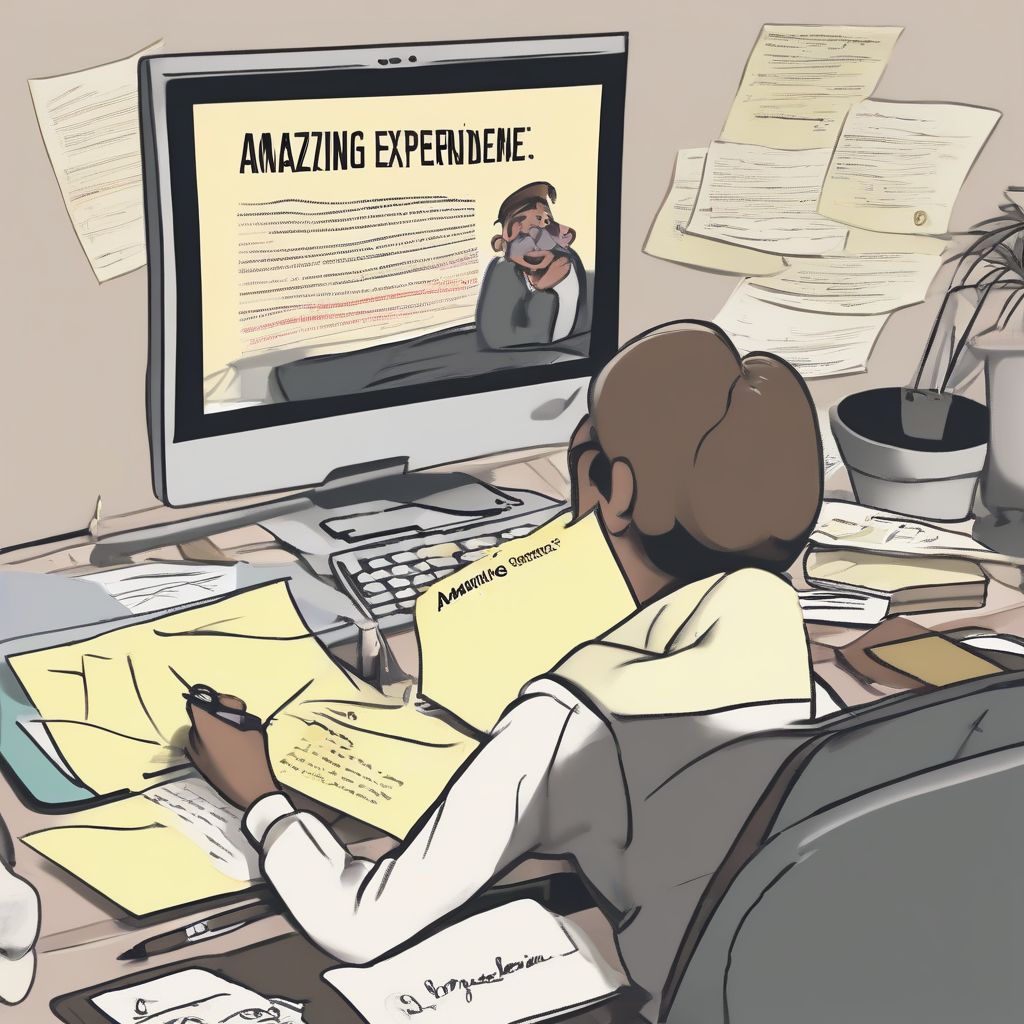“The best way to predict the future is to create it.” – While often attributed to Abraham Lincoln, this powerful quote speaks volumes about taking charge of your career journey. Your cover letter is your chance to create that future, to compellingly showcase how your experience aligns perfectly with the dream job you’re pursuing. It’s more than just a formality; it’s a golden opportunity to make a powerful first impression.
So, how do you transform your cover letter from a mere document into a dynamic, attention-grabbing tool that highlights your unique qualifications? It’s all about showcasing your experience in a way that resonates with hiring managers and makes them eager to learn more. Let’s dive into the best strategies to make your cover letter stand out:
Understanding Your Audience: The Foundation of a Strong Cover Letter
Before you even start writing, take a moment to step into the shoes of the hiring manager. They’re likely sifting through piles of applications, looking for a candidate who not only possesses the right skills but also demonstrates a genuine understanding of the company and the position.
Research is Key:
- The Company: Delve deep into the company’s website, mission statement, values, and recent news or projects. What are their pain points? What are their goals?
- The Position: Analyze the job description thoroughly. Pay close attention to the required skills, responsibilities, and desired qualifications.
 Highlighting Experience on a Cover Letter
Highlighting Experience on a Cover Letter
Weaving Your Narrative: Aligning Your Experience with the Job Requirements
Now that you have a solid understanding of your audience and their needs, it’s time to weave your story – a compelling narrative that showcases how your experience directly addresses their requirements.
1. The Power of Storytelling:
Instead of simply listing your past roles and responsibilities, transform your experiences into captivating stories. Use the STAR method (Situation, Task, Action, Result) to provide specific examples:
- Situation: Describe the context or challenge you faced.
- Task: Explain your responsibility or role in the situation.
- Action: Detail the steps you took to address the challenge or fulfill your responsibility.
- Result: Highlight the positive outcomes or achievements that resulted from your actions.
For example, instead of writing: “Managed a team of five marketing professionals,” you could say: “Led a team of five marketing professionals to exceed quarterly lead generation goals by 15% through implementing a new social media strategy.”
2. Quantifiable Achievements:
Numbers speak louder than words, especially in a cover letter. Quantify your accomplishments whenever possible to demonstrate your impact:
- Increased sales by X%
- Reduced costs by Y%
- Improved efficiency by Z%
3. Keyword Optimization:
Just like you’d optimize a website for search engines, your cover letter benefits from incorporating relevant keywords. Carefully weave in keywords from the job description throughout your cover letter, but do so naturally. Avoid keyword stuffing, which can be off-putting to hiring managers.
Structure and Formatting: Making Your Cover Letter Easy on the Eyes
A well-structured cover letter is crucial for readability. Follow a clear and concise format to ensure your message is easily digestible:
- Header: Your Name and Contact Information
- Date
- Hiring Manager’s Name and Title (if known)
- Company Name and Address
- Salutation: Dear [Hiring Manager Name], (or Dear Hiring Manager, if the name is unknown)
Body Paragraphs:
-
Introduction: Start with a compelling hook that grabs the reader’s attention. Briefly mention the position you’re applying for and why you’re excited about it.
-
Body Paragraph 1-2: Focus on your most relevant skills and experience, using the STAR method and quantifiable achievements to showcase your abilities.
-
Closing Paragraph: Reiterate your enthusiasm for the role and how your skills and experience align with the company’s needs.
-
Closing: Sincerely, [Your Name]
Proofreading and Editing: The Final Polish
Before you hit that submit button, meticulously proofread your cover letter for any typos, grammatical errors, or awkward phrasing. It’s helpful to have a fresh pair of eyes review it as well. A polished and error-free cover letter demonstrates your attention to detail.
Conclusion: Crafting Your Compelling Narrative
Your cover letter is more than just a document; it’s your opportunity to make a powerful first impression and secure that coveted interview. By understanding your audience, weaving a compelling narrative that showcases your relevant experience, and structuring your letter for readability, you can create a cover letter that truly stands out. Remember, effective job search strategies often involve crafting tailored and compelling applications.
Now that you’re equipped with these tips, take the time to craft a cover letter that reflects your unique skills and aspirations.
What strategies have you found effective in showcasing your experience in cover letters? Share your insights in the comments below!
[amazon bestseller=”resume books”]
